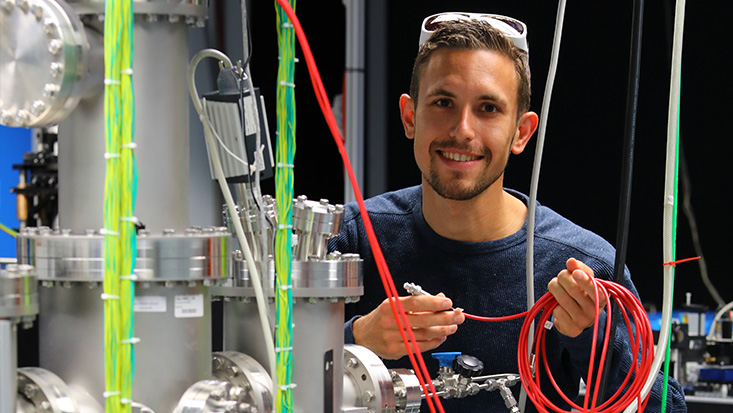This page contains automatically translated content.
"A physicist can understand almost anything"
 Image: Andreas Fischer
Image: Andreas Fischer"Anyone who wants to run a marathon needs stamina. He has to be disciplined in pursuing his goal and learn to deal with setbacks. As the reigning German university champion in the half marathon, I know that all too well. However, stamina and personal responsibility are also required for my dissertation. At the Institute of Physics at the University of Kassel, I am currently researching the mirror image of molecules.
Physics is fascinating because it can be used to explain things from everyday life in a simple way. A physicist can understand almost anything. It was this fact that brought me to study physics - and that continues to drive me today as a doctoral student. For laymen, my dissertation topic may sound complicated. In fact, however, the "Mass-resolved determination of circular dichroism" is not that difficult to understand. The focus of my research is on so-called chiral molecules. This means that two molecules can consist of the same atoms, but have a mirror-image structure. They are either left-handed or right-handed.
How can this handedness be determined and ultimately perhaps even chirality manipulated or reversed? This question is important in the medical field, for example. The human body, whose molecules are composed of only one handedness, interacts with other chiral molecules in specific ways. While molecules of a certain handedness are effective as medicine, the mirrored variant of the same molecule can be toxic for our organism. Currently, I am investigating in experiments how such chiral molecules react to extreme light irradiation - in this particular case ultra-short laser pulses of left- or right-handed light. Finally, the specific manipulation of these laser pulses opens up further insights into the world of these molecules.
My work is embedded in the Collaborative Research Center "Extreme Light for the Analysis and Control of CHirality" (ELCH), which is funded by the German Research Foundation and which offers me excellent research conditions. This is true for the laboratory equipment as well as for the valuable exchange with colleagues who are also working intensively on light-induced recognition of chiral molecules.
I would like to complete my dissertation in early 2020, and until then I also have some sporting challenges ahead of me. Among other things, I will compete in the German Championships and the German University Championships in the half marathon."
This text appeared in the 2018 annual report. You can find the full report here.